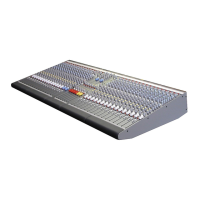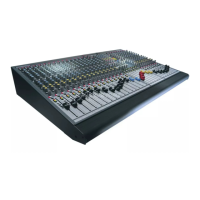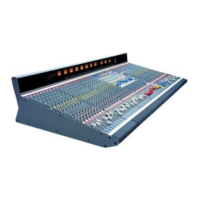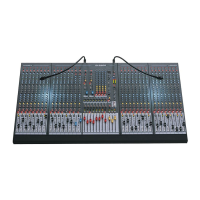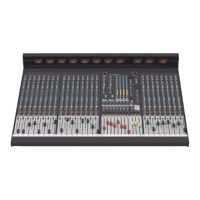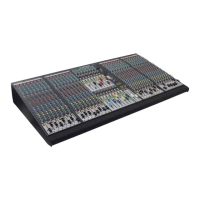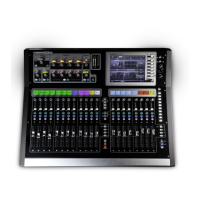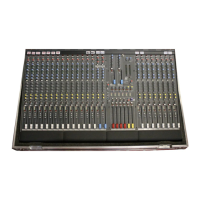STEREO
MATCHING THE INPUT
For INPUT A set the IN A/B switch up.
For INPUT B set the IN A/B switch down.
MONO combines the left and right inputs to mono the
source, or may be used to input a mono source to the
stereo channel path.
The GAIN control allows a wide range of equipment to
be correctly matched to the console.
ROUTING
The PAN control changes its characteristics depending
on the MONO switch status. In stereo, PAN functions
as a balance control, usually to adjust for imbalance in
the source. In mono it provides true pan to position the
signal in the stereo image.
The 100mm long throw FADER provides a further
10dB boost above the normal ‘0’ operating position.
MUTE switches the channel off.
CHECKING THE SIGNAL
The red PEAK LED warns of potential overload 5dB
before clipping at the pre-fade L and R channel points.
Pressing PFL routes the pre-fade signal in mono to the
console monitor/meter system to check sound quality
and gain setting. The PEAK LED will illuminate at
HALF brightness when the PFL switch is pressed.
6 AUX SENDS
6 individual sends with 1-4 and 5,6 switchable pre/post
fader provide effects and foldback sends for recording or
F.O.H., or monitor mix sends for ON-STAGE console
operations. Internal links for the pre-fade sends are set
as standard to pre-EQ (post-EQ option) and post-mute
(pre-mute option).
The L and R stereo signals are combined to provide the
aux feeds in mono.
DUAL INPUT
The stereo channel features a dual
input which selects between two
alternate stereo sources. This is ideal
for fast switching between stereo
sources without the need to re-patch
the console. It also allows connec-
tion to standard leads with either
jack or phono plugs.
The stereo channels may also be
used for returns from stereo effects
processors, providing full EQ, sig-
nal checking, routing and feeds to
foldback monitors. To avoid feed-
back do not send the return back to
itself through its post-fade aux send.
4-BAND EQUALISER
Shelving HF and LF and two fixed frequency peak/dip
mid controls provide 14dB of cut and boost.
EQ IN switches the equaliser in or out of the channel
path. Centre detents set the response flat.
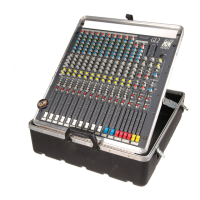
